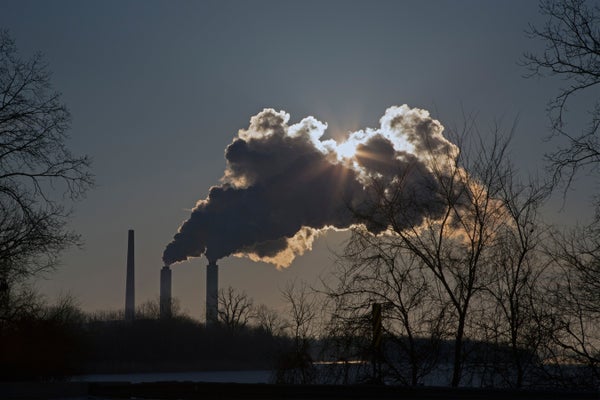CLIMATEWIRE | Particulate pollution from coal plants is likely far more deadly than EPA regulations recognize, according to a study published in Science over the Thanksgiving holiday.
Exposure to fine particulate air pollutants from coal-fired power plants has an associated risk of mortality that is more than double that of PM2.5 from all other sources, according to the study from researchers at Harvard University, George Mason University and University of Texas, Austin.
“PM 2.5 from coal has been treated as if it’s just another air pollutant, but it’s much more harmful than we thought, and its mortality burden has been seriously underestimated,” said lead author Lucas Henneman, an assistant professor in George Mason’s department of civil, environmental and infrastructure engineering.
On supporting science journalism
If you're enjoying this article, consider supporting our award-winning journalism by subscribing. By purchasing a subscription you are helping to ensure the future of impactful stories about the discoveries and ideas shaping our world today.
To calculate the pollution’s mortality rate, the authors looked at emission data from 480 American coal plants between 1999 and 2020 and used computer models to track where the wind blew pollution. They then examined Medicare records for some 650 million Americans living within the polluted areas.
They found a "staggering" number of deaths — 460,000 — between 1999 and 2020 that were attributable to coal-fired power plant pollution. Ten of the power plants contributed to at least 5,000 deaths apiece.
What’s more, deaths dramatically decreased around some of the power plants after they installed pollution control technology, called scrubbers. For example, before emissions scrubbers were installed at the Keystone power plant in Pennsylvania, deaths attributable to coal pollution in the immediate area averaged more than 600 per year. Once scrubbers were installed, they dropped below 100.
“There are a substantial number of deaths prevented the year after one of the scrubbers is installed because the air is substantially cleaner,” said co-author Francesca Dominici, a professor of biostatistics and population and data science at Harvard's T.H. Chan School of Public Health.
The new study is part of a growing body of evidence that shows adverse health effects of PM2.5 can vary depending on the source of pollution — a finding that air pollution regulations do not necessarily reflect.
“PM 2.5 is a matter of convenience, it reflects the size of a particle,” Henneman said. “But particles of the same size can contain any different number of chemicals, depending on the source.”
George Thurston, a professor in the departments of medicine and population health at the New York University School of Medicine, has been studying the toxicity of PM2.5 from coal plants specifically for decades. He was not involved in the new Science study but said its findings are in line with his own research.
Most recently, Thurston was the lead author of a study published this summer in Environmental Research: Health looking at the closure of a Pittsburgh coal processing plant. When the Shenango Coke Works facility closed in January 2016, average daily levels of sulfur dioxide fell by 90 percent at government air monitoring stations near the plant, and by 50 percent at monitoring stations more than 6 miles away. That corresponded to health gains. Immediately after the shutdown, average weekly visits to local emergency departments for heart-related problems decreased by 42 percent.
“It turns out that particles from fossil fuel combustion have a lot of really toxic constituents in them, so they are really above average in terms of health effects per mass,” Thurston said.
In particular, PM2.5 from coal combustion can contain transition metals, which can cause oxidated stress in the body, which leads to inflammation that can exacerbate conditions such as diabetes and cardiovascular conditions. Coal PM2.5 also contains sulfur dioxide, which makes the metals easier for the body to absorb.
EPA regulations for PM2.5 don’t reflect that different sources of emissions can have varying effects on people. But they still have targeted coal fired power plants because such combustion, along with motor vehicle traffic, is one of the largest sources of PM2.5, generally.
Both Henneman and Thurston said they hope the agency would consider their research in future regulations. In particular, they say, their work would help EPA when it calculates the benefits of requiring pollution controls.
“As air pollution in the U.S. gets cleaner and cleaner, we should be targeting the remaining sources that are the most impactful to health,” Henneman said.
Reprinted from E&E News with permission from POLITICO, LLC. Copyright 2023. E&E News provides essential news for energy and environment professionals.
